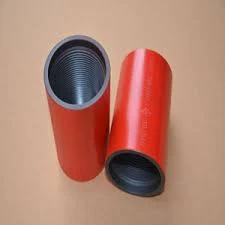- Afrikaans
- Albanian
- Amharic
- Arabic
- Armenian
- Azerbaijani
- Basque
- Belarusian
- Bengali
- Bosnian
- Bulgarian
- Catalan
- Cebuano
- Corsican
- Croatian
- Czech
- Danish
- Dutch
- English
- Esperanto
- Estonian
- Finnish
- French
- Frisian
- Galician
- Georgian
- German
- Greek
- Gujarati
- Haitian Creole
- hausa
- hawaiian
- Hebrew
- Hindi
- Miao
- Hungarian
- Icelandic
- igbo
- Indonesian
- irish
- Italian
- Japanese
- Javanese
- Kannada
- kazakh
- Khmer
- Rwandese
- Korean
- Kurdish
- Kyrgyz
- Lao
- Latin
- Latvian
- Lithuanian
- Luxembourgish
- Macedonian
- Malgashi
- Malay
- Malayalam
- Maltese
- Maori
- Marathi
- Mongolian
- Myanmar
- Nepali
- Norwegian
- Norwegian
- Occitan
- Pashto
- Persian
- Polish
- Portuguese
- Punjabi
- Romanian
- Russian
- Samoan
- Scottish Gaelic
- Serbian
- Sesotho
- Shona
- Sindhi
- Sinhala
- Slovak
- Slovenian
- Somali
- Spanish
- Sundanese
- Swahili
- Swedish
- Tagalog
- Tajik
- Tamil
- Tatar
- Telugu
- Thai
- Turkish
- Turkmen
- Ukrainian
- Urdu
- Uighur
- Uzbek
- Vietnamese
- Welsh
- Bantu
- Yiddish
- Yoruba
- Zulu
Exploring the Role of Steel Coupling in Structural Engineering Applications and Innovations
Understanding Steel Coupling A Crucial Component in Structural Engineering
Steel coupling refers to a connection technique utilized in engineering to link two structural elements, typically in steel constructions. These couplings serve as vital components that enhance the stability, strength, and versatility of various structures, including buildings, bridges, and towers.
The Importance of Coupling
In structural engineering, coupling is essential for several reasons. First, it allows for the effective transfer of loads between different components, ensuring that forces are distributed evenly across the structure. This distribution is crucial in preventing localized failures that could lead to catastrophic consequences. Steel couplings, in particular, are favored for their high tensile strength, durability, and resistance to environmental challenges.
Secondly, steel couplings can accommodate thermal expansion and contraction, which is crucial for structures subjected to temperature fluctuations. As materials expand and contract, couplings provide a mechanism that allows for this movement without compromising the integrity of the overall structure. This flexibility is especially important in areas with significant temperature variations, ensuring that the structure maintains its intended shape and strength.
Types of Steel Couplings
There are various types of steel couplings, each designed for specific applications. The most common types include
1. Rigid Couplings These couplings do not allow for any relative motion between the connected components. They are ideal for applications where precision alignment is critical, such as in machinery and equipment.
2. Flexible Couplings These couplings are designed to accommodate misalignment between connected parts. They can absorb shocks and vibrations, making them suitable for dynamic applications.
3. Universal Couplings Often used in applications where shafts need to be connected at varying angles, universal couplings allow for greater flexibility and movement.
steel coupling

4. Slip Couplings These couplings permit a certain amount of axial movement, which can be crucial in applications where expansion and contraction are expected.
Applications of Steel Couplings
In civil engineering, steel couplings are widely used in the construction of bridges, where they help connect beams and girders
. These couplings enhance the overall load-bearing capacity of the bridge and are designed to withstand wind forces and seismic activities. Additionally, in tall buildings, steel couplings are essential for connecting columns and beams, enabling the structure to resist lateral forces such as those caused by earthquakes.In mechanical engineering, steel couplings play a pivotal role in rotary applications, such as motors and generators. They ensure the reliable connectivity of shafts, allowing for the effective transfer of torque and power while minimizing wear and tear on components.
Engineering Innovations
Recent advancements in material science have led to the development of high-performance steel couplings that are lighter yet stronger than traditional counterparts. The use of advanced design techniques, such as computational modeling and simulation, has also improved the efficiency and effectiveness of these couplings in real-world applications.
Moreover, the trend towards sustainability in construction has prompted engineers to explore eco-friendly materials and manufacturing processes for steel couplings. Techniques such as recycling and the incorporation of alternative materials are gaining traction, aiming to reduce the environmental impact of construction projects while maintaining structural integrity.
Conclusion
Steel coupling is an integral aspect of modern engineering that enhances the functionality and durability of structures. Its importance cannot be overstated, as it fosters the safe and efficient transfer of loads and accommodates the natural movements of materials. As engineering practices continue to evolve, steel coupling will undoubtedly play a pivotal role in the development of innovative and sustainable infrastructure solutions for the future.
-
Tubing Pup Joints: Essential Components for Oil and Gas OperationsNewsJul.10,2025
-
Pup Joints: Essential Components for Reliable Drilling OperationsNewsJul.10,2025
-
Pipe Couplings: Connecting Your World EfficientlyNewsJul.10,2025
-
Mastering Oilfield Operations with Quality Tubing and CasingNewsJul.10,2025
-
High-Quality Casing Couplings for Every NeedNewsJul.10,2025
-
Boost Your Drilling Efficiency with Premium Crossover Tools & Seating NipplesNewsJul.10,2025







